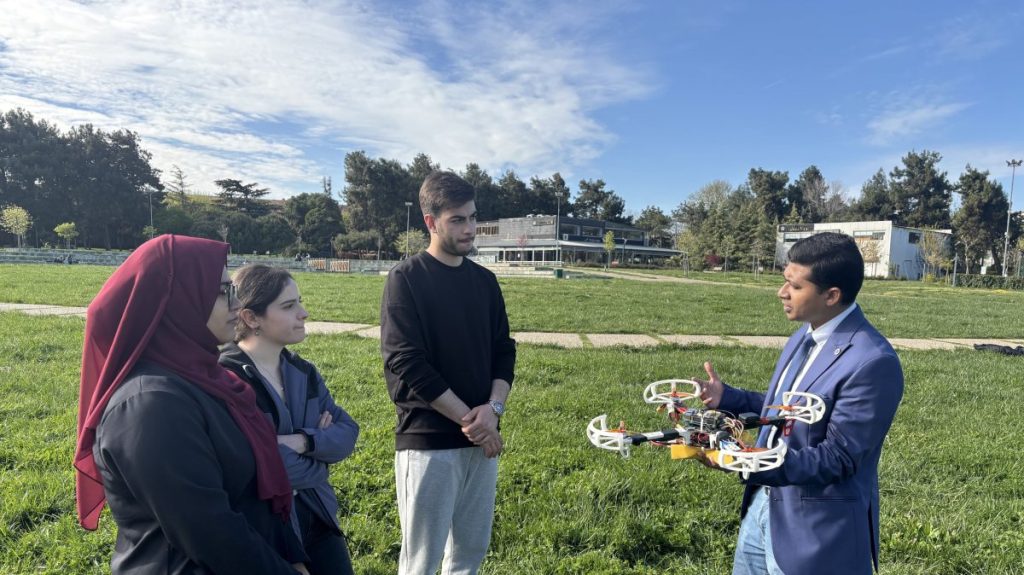Communication networks are often severely disrupted during natural disasters like earthquakes and floods. Yet, fast and reliable communication is essential for coordinating emergency response efforts in their aftermath.
A researcher at Yıldız Technical University in Istanbul, Türkiye, has developed a pioneering drone-based emergency communication system to maintain vital connectivity during natural disasters such as earthquakes and floods – the system, created by associate professor Afm Shahen Shah, a Bangladeshi-born academic in Yıldız Technical University’s Faculty of Electrical and Electronics Engineering, is designed to function as a substitute for damaged base stations during emergencies.
The project began in 2022, but gained momentum following the devastating Feb. 6, 2023, earthquakes centered in Kahramanmaraş, where widespread infrastructure damage caused serious communication breakdowns. With about 30% of the region’s base stations rendered inoperable, thousands of earthquake victims were left unable to contact rescue teams.
Shah explained the specifics of the system: “For example, a base station typically serves a 2-kilometer radius. In our model, five drones replace the function of a traditional base station in the affected area. These drones create a command system to maintain communication within the region. In simpler terms, it works like a Wi-Fi system that ensures continuous communication, even in disaster zones.”
He added: “By using drones as mobile base stations, we can quickly restore communication in disaster-affected areas. When a traditional base station goes offline, these drones take over and provide coverage to the same area, allowing people to contact emergency services and stay connected. This is similar to how a generator provides backup power when electricity is cut. Our drones step in to keep the communication network alive when the infrastructure is damaged or destroyed.”
Shah emphasized the system’s autonomous features. “We developed a clustering system so that when one drone’s battery drops to 20%, it automatically returns for charging and is replaced by another drone with full power. This ensures uninterrupted communication during critical hours.”
The project has received support from both the Scientific and Technological Research Council of Türkiye (TÜBİTAK), and Yıldız Technical University. Shah shared, “Currently, we are using six drones—three funded by TÜBİTAK and three supported by Yıldız Technical University. These drones, along with their development, are being supported for both material acquisition and by the research team.”
Currently, the system is undergoing testing on campus. “We’re still calculating how many drones are needed for a specific area,” Shah said. “With the help of six graduate students, we’re improving the software using artificial intelligence so the drones can be easily controlled remotely.”
Shah noted that the system has been published in the internationally recognized journal Drones. He also mentioned that no comparable working model currently exists in global academic literature. “We hope it will be a reliable communication tool not only for Türkiye but also for other countries facing similar disasters,” Shah said, adding that the system is expected to be ready by the end of the year.


